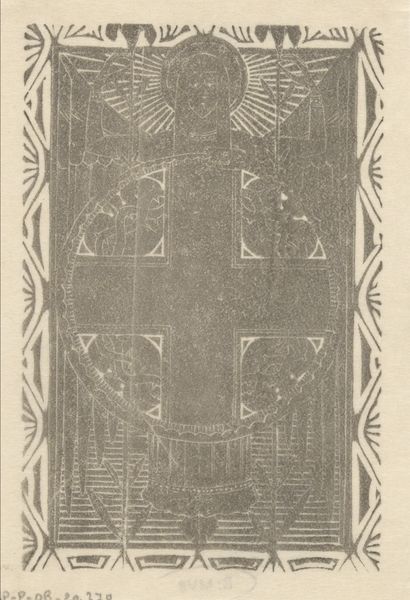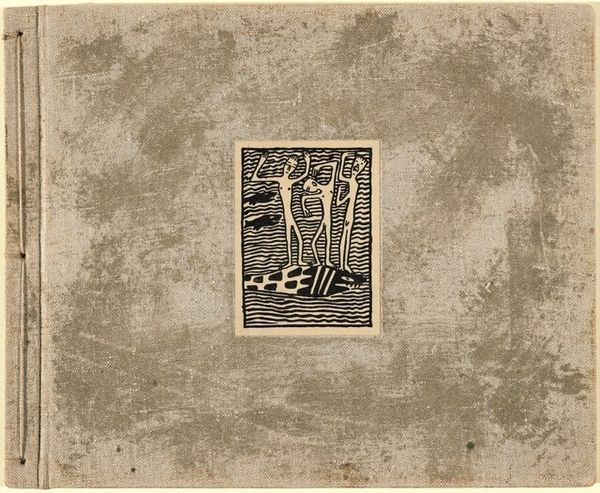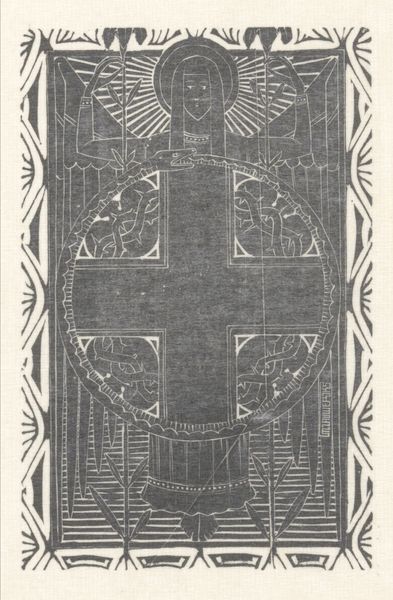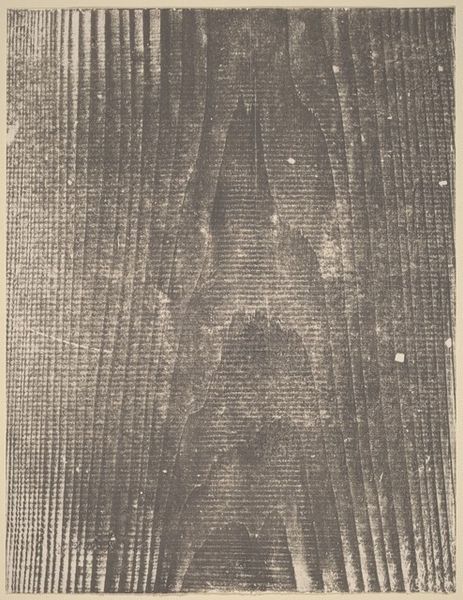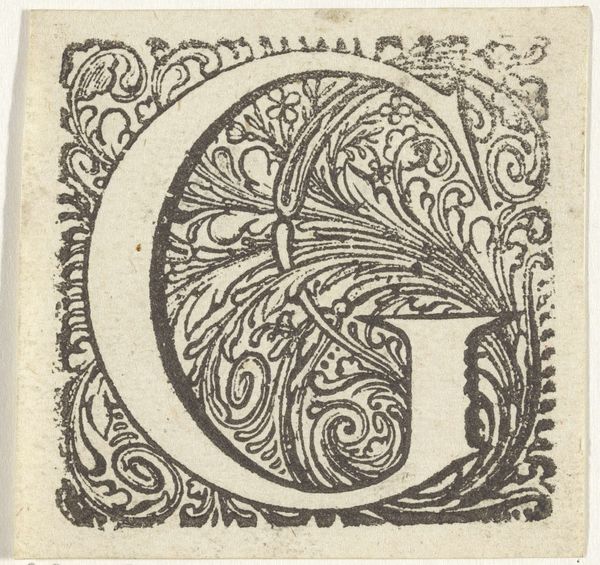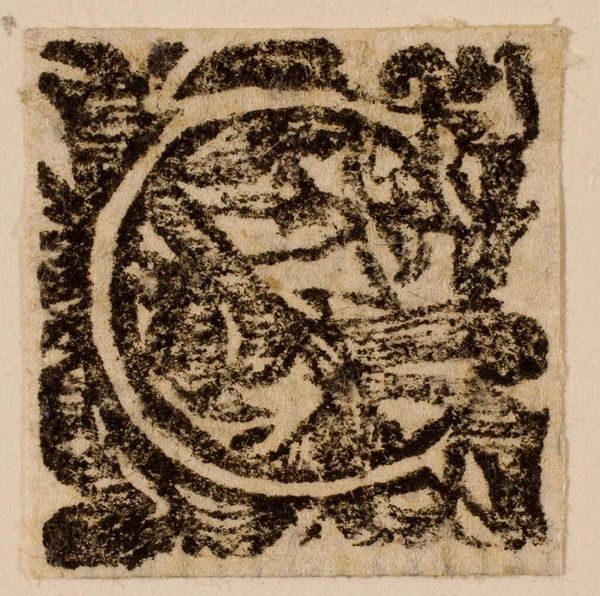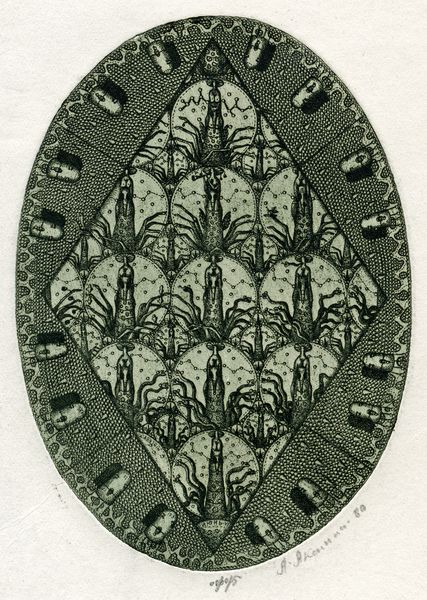
Fragment titelpagina voor: Geerard ter Brugge, Verlichtery kunst-boeck inde welke de rechte fondamenten, en̄ het volcomen gebruyck der illuminatie met alle hare eygenschappen klaerlijcken werden voor oogen gestelt, 1616 1616
0:00
0:00
Dimensions: height 22 mm, width 25 mm
Copyright: Rijks Museum: Open Domain
Curator: Well, it's quite striking. Very graphic. I immediately think of early scientific illustrations, maybe something from a botanical text. The high contrast feels very decisive. Editor: That's interesting. I see this object more in the context of its time. This is a title page fragment from 1616, made by Claes Jansz. Visscher. It was intended for "Illumination Art-Book," which focused on the art of illuminating texts. The piece is held in the collection of the Rijksmuseum. Curator: Illumination, right. It’s intriguing to see such a sharp, almost mechanical aesthetic associated with something we typically think of as delicate, like manuscript decoration. Editor: It speaks to the democratization of knowledge and art happening at that time. The printing press was facilitating the broader distribution of artistic techniques. This engraving would allow for the standardization and dissemination of illumination principles. Curator: Absolutely. And what about this recurring symbol? This head of the Sun, wreathed in emanating light, what is the origin and cultural continuity that you can speak on? Editor: Ah, this anthropomorphic sun isn't unique, but within the context of a how-to guide for illuminating, it may not just signify general enlightenment but the illumination of the mind that occurs when one takes the creative, illuminating path. A metaphor, essentially. Curator: The horizontal lines disrupt the naturalistic expectation and give it an abstracted effect. The face emerges from this pattern of horizontals—this symbol merges the universal with the codified rules of craft, offering itself up as both sun and the embodiment of creative application. Editor: So in considering the visual elements, how does it challenge what came before and pave the path toward something new, particularly relating to artistic instruction? Curator: It almost proposes a new way of looking, not just at the world, but also at the instruction and creative process itself, shifting from divine inspiration toward practical, reproducible knowledge. A revolutionary concept through this image of symbolic transformation! Editor: And hopefully, in a gallery visitor seeing this image, they begin to understand just how profound the proliferation of easily reproduced imagery really was to our understanding of art. Curator: Precisely. This small piece is an expansive point for thinking about the relationship between knowledge, art, and society.
Comments
No comments
Be the first to comment and join the conversation on the ultimate creative platform.

